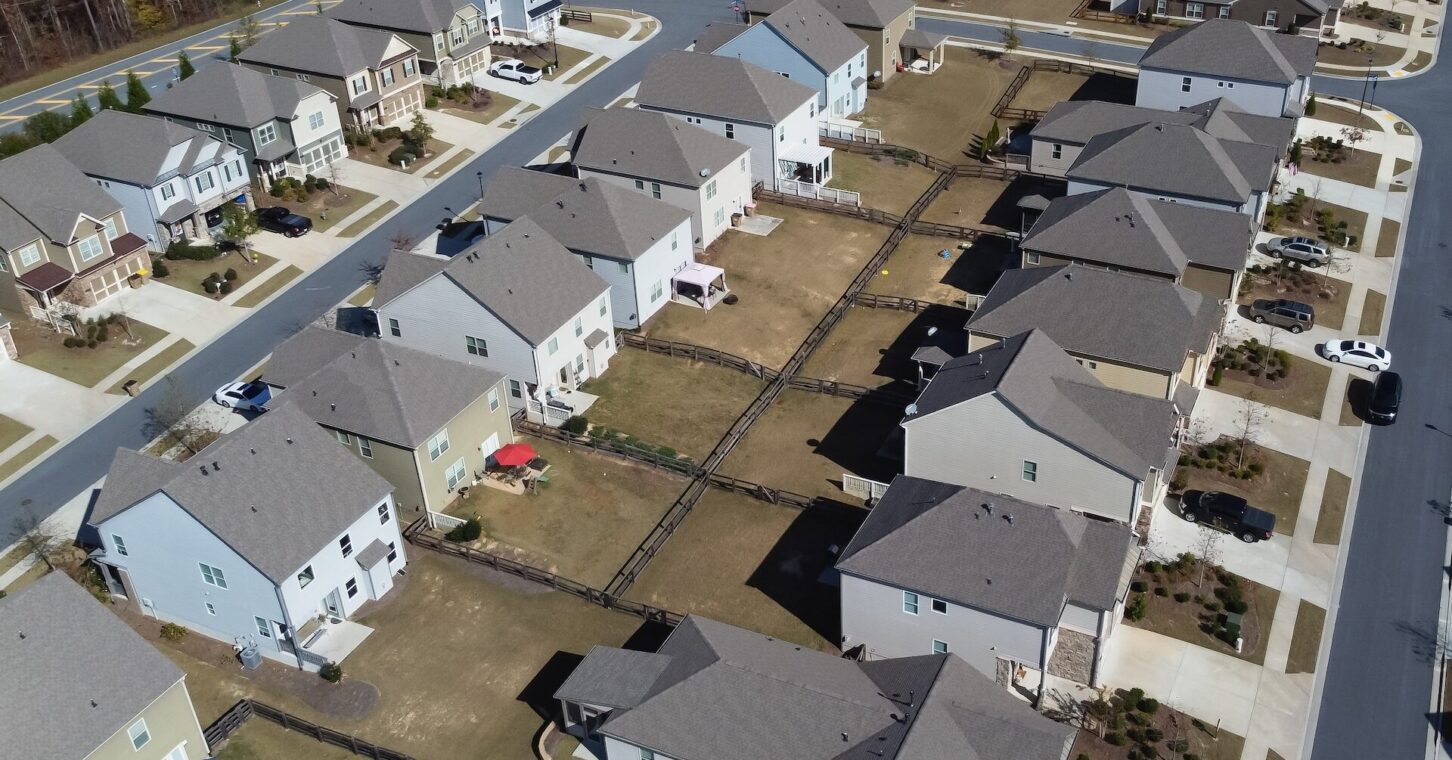
If you’ve been following the housing market, you’ve certainly noticed a recent surge in prices. As of March 2024, homes in Atlanta were selling at a median price of $414,000. This marks a substantial increase from past years that shows no signs of slowing down.
Much of this increase is not due to market forces, but rather dictated by a complex system of regulatory factors that increase costs. It is just another instance of government over-governing.
Let’s examine a few key areas where housing regulation is driving up prices.
Architectural and Development Requirements
Local governments in Georgia and across the country often impose detailed architectural and development standards that mandate the use of certain materials and aesthetic features. This includes energy-efficiency upgrades — which the Biden administration is actively pushing to increase.
These requirements generally aim to enhance the quality and sustainability of new buildings but come at a cost. For instance, developers are sometimes required to use more expensive materials than they would choose otherwise. These architectural design standards alone add approximately 4.7% to the total cost of multifamily housing projects in Georgia. Such mandates can include elaborate facade designs and other aesthetic considerations that, while improving visual appeal, increase initial construction expenses.
Inclusionary Zoning (IZ) Policies
Inclusionary Zoning policies require developers to include a certain percentage of affordable housing units within new residential developments. These were initially created as a solution to housing crises. For example, in Atlanta and other cities across Georgia, these policies required developers to set aside at least 10% of units for lower-income brackets. While these policies are motivated by a concern about housing affordability, they can have a reverse effect due to increased development costs for builders. This leads to higher prices for market-rate units to offset lost revenue, or even reduced housing supply if developers find the requirements too burdensome. In Georgia, this has led to an increase in overall project costs by an estimated 5.1% in some areas for multi-family housing.
Impact fees are charges imposed on developers to help cover the costs associated with the increased demand for public services and infrastructure resulting from new development. These include things like roads and parks. However, these fees vary widely across different jurisdictions in Georgia and can significantly affect the cost of housing. For example, an “impact fee arms race” in metro Atlanta has led to some of the highest fees in the state, as neighboring jurisdictions compete to increase their fees, passing these costs onto homebuyers.
Lot and Home Size Requirements
Lot size requirements specify the minimum or maximum area that a parcel of land must have to be developed or subdivided, while home size requirements dictate the minimum or maximum size of residential structures within certain zoning districts.
Some regions in Georgia impose minimum lot and home size requirements that far exceed what many homeowners and builders would otherwise choose. These regulations can dramatically increase the cost of new housing by limiting the number of units that can be built on a given parcel of land and by necessitating larger, more expensive constructions. For instance, certain districts have set minimum lot sizes at five acres and home sizes at 2,000 square feet. This excludes potential new homes from being built, limiting the overall housing supply.
Zoning and Land-Use Regulations
These regulations define how property in specific areas can be used, aiming to ensure that land is used in a way that promotes the general welfare of the community. But extensive zoning and land-use regulations restrict the types and quantities of housing that can be built in certain areas. These include density restrictions, height limits, and specific land-use designations that can stifle development and lead to higher costs. Restrictive zoning practices not only increase direct costs due to delays and the need for legal consultations but also limit the overall availability of affordable housing options. These regulations also disproportionately affect minorities and lower- and middle-income residents.
Building Code Changes and Permitting Fees
These regulations govern the design, construction, alteration and maintenance of buildings. They aim to protect the health and safety of occupants by ensuring buildings are structurally sound and resistant to hazards such as fire, earthquakes and severe weather. Yet, frequent and often unnecessary changes to these building codes and the complex permit processes required in Georgia add uncertainty and expense to housing projects.
Regulatory costs during both the lot-development and construction phases account for a significant portion of the final house price. One Foundation study illustrates that these costs can be nearly 27% of the final price of a newly built single-family home. These changes often necessitate redesigns and delays that can further inflate costs.
Administrative and Compliance Costs
The bureaucratic process involved in complying with the myriad regulations can be lengthy and costly. Developers often face delays that accrue additional costs, including paying for extended financing and holding costs. Moreover, the administrative burden of ensuring compliance with local, state, and federal regulations can require significant manpower and legal expertise, further increasing the overall cost of development.
The cumulative effect of these regulatory measures is a significant increase in the cost of housing in Georgia. While many regulations may have a positive motivation — such as ensuring safety, sustainability or aesthetic quality — the combined impact can make housing unaffordable for many residents. To address this, policymakers need to consider the real-world effects of these policies and work towards deregulation that can reduce unnecessary costs. Streamlining approval processes, reassessing zoning laws and recalibrating fees could contribute to more affordable housing across the state.